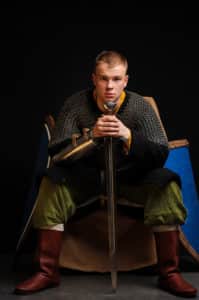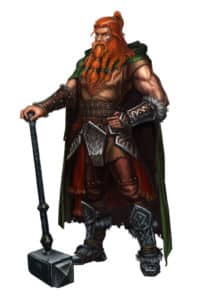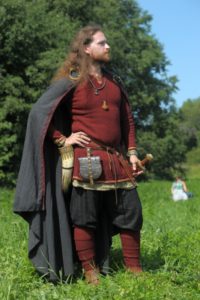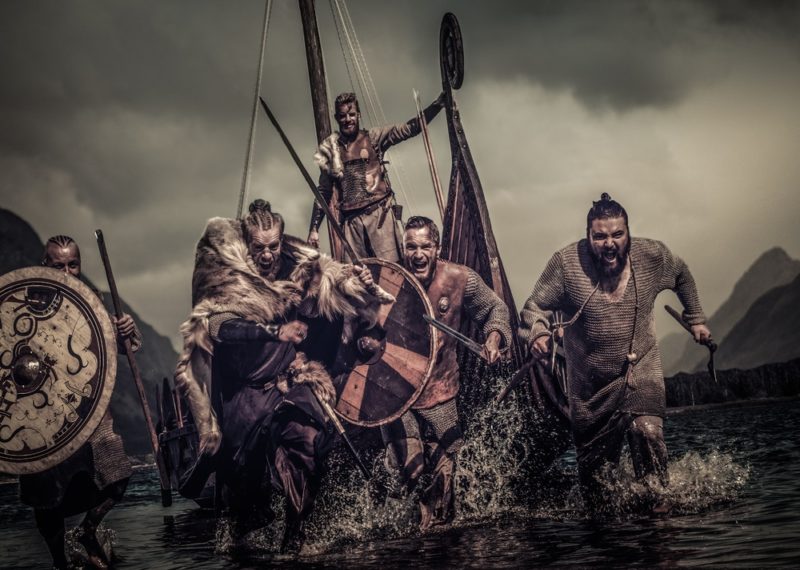The Vikings were actually highly elegant, they took personal hygiene seriously, and wore fine clothing embellished with jewels, despite the common misconception that they were rough, filthy, and violent. Furthermore, the Vikings’ beautiful clothing and devotion to personal appearance are also noted by several Christian historians who condemned them.
Wool, linen, animal skins, and, for the wealthy, silk, were the materials used to make Viking clothes. Combs were made from antler, bone, ivory, and wood and were generally kept in their own cases. It seemed that practically every Viking carried one.
The top class embellished themselves with jewelry made of silver, gold, jewels, and polished glass, while the lower class also accessorized themselves within their means with tin, lead, iron, and possibly copper.
Vikings were Scandinavians (though not all Scandinavians were Vikings), and the emphasis the Vikings placed on appearance reflected the values of the greater civilization. It has been suggested that the idea of fate had a role in this because no one knew when they would die, thus, they would always present their finest selves for the inevitable entrance into the afterlife.
The necessity of starting the day “combed and bathed” is stressed in Norse poetry, particularly in the Hávamál and Reginsmál, because one never knew where they would be by evening or even if they would still be alive.
Viking Age Pants
A male Viking often wore a tunic, trousers, and cloak.
The tunic may have reached the knees and resembled a long-sleeved shirt without buttons. Moreover, the man draped a cloak over his shoulders that was brooch-fastened. His arm, which he used to draw his sword or ax, was covered by the cloak. This made it possible to determine a Viking’s hand preference: right or left.
We don’t have much information on the pants’ shape. They may have resembled plus fours since the fabric was gathered up below the knee. The socks or puttees were perhaps wrapped around the shins of the plus fours.
Puttees are a type of legwarmer in which the legs are wrapped in a long, narrow piece of material to provide warmth. Men typically used leather boots or shoes as footwear.
The Viking age men wore belts or had strings wrapped around their waists to hold their trousers up because their clothing lacked pockets and elasticity. Viking men would have a weapon or a pocketbook on their belts. Many objects, including a comb, gaming pieces, nail cleaner, and silver coins, were kept in this bag.
Additionally, some males had caps with rounded or pointed crowns. The caps were made from leather or material.

The Evidence of Trousers
Vikings are thought to have worn at least two types of leg coverings: a wide, knee-length, baggy type and a narrow, full-length, more fitted type, according to iconographic evidence found in objects like the Gotlandic image stones and the Oseberg tapestry. Unfortunately, not many items can be identified as trousers with certainty, and most of the time, the cut of the clothing cannot be determined from the remains. Now, let’s move on to the proof.
Numerous discoveries of ancient trousers from the Migration Era — the period between the fall of Rome and the start of the Viking Age — show that Scandinavians have worn trousers for a considerable amount of time, at least in their narrow form.
Evidence that multicolored plaid was worn in the Scandinavian region can be found in the remains of a man from the Migration Era buried in a mound at the Eveb farm in Gloppen, western Norway.
This man wore trousers with a 15x15cm checkered pattern in at least three different colors, including red, green, and blue. It is more likely that these trousers were also of the narrow form because the wool from which they were produced was not creased or pleated.
Some clothing fragments were thought to be the remains of the crotch of a pair of baggy men’s trousers, often known as “knickers,” “plus fours,” or Pumphose, were discovered among the tenth-century caulking rags that were unearthed at Hedeby harbor. These pants are commonly referred to as “balloon” or “Viking funny” in the East Kingdom. The Hedeby fragments had a crepe weave and were made of fine wool tabby.
They indicate that the pair of pants had two colors because some of the pieces are colored red while others are yellowish. It is possible to identify the Hedeby fragments as trousers because of how closely they resemble the Thorsbjerg trousers’ crotch cut. Unfortunately, from the bits that are left, not much can be deduced about the general shape of these pants.
One pair of pants’ remains were discovered in Birka, and they were likely of the short, baggy type. The stockings were made of wool with tiny hooks sewed onto them, and the trousers were made of linen (or linen lined with metal eyes put into the lower corners). These stockings were fastened to the bottom edges of the trousers just below the knees.
Most of the literature refers to these tiny hooks as “garter hooks,” and they appear to have been most often used in Saxon regions, but they may be found at early Northern European sites from Birka to Winchester and even in Jorvik.
However, it is not always clear how they were used; typically, they were used on garters instead of trousers. One of the things that make the Birka find so valuable is this unaltered and rare example of their use.
Type I Trousers
The kind of pants we will discuss here is widely contested and has a very mysterious and exotic past. As evidenced by pieces of fitted diamond twill wool pants discovered at the Roman stronghold of Dura Europos, it has been widely assumed that the style of tight-fitting, footed trousers likely originated in the Middle or Near East in the form of Persian Cavalry.
Essentially, the positioning of the seams in the crotch and rear is one reason for this theory. They are incredibly comfortable to wear while riding a horse, working, or fighting thanks to their placement, which runs up each side of both regions.
Type II Trousers
The extremely large, pleated, or gathered pants that are often incorrectly called “Rus trousers” in contemporary media appear to have been a defining feature of Viking Age Scandinavian style. We know these were uniquely-fashioned garments, specific to this civilization and period in time, and finds from Haithabu seem to shed some light on how these trousers may have been made and developed.
These trousers are mentioned in both contemporary literatures from those who came into contact with these individuals, as well as seen in stone carvings and artwork from the time.

Conclusion
Now that you know everything there is to do with Viking trousers, how about owning some yourself? We’ve heard that they’re very comfortable to lounge around in or they may be the best idea for a dress-up party!
Q&A
Did Vikings Wear Trousers?
The Viking men often wore a tunic, trousers, and a cloak, whereas the women mostly wore a dress.
What Were Viking Trousers Made Out of?
Viking clothes were made from linen, wool, and animal skins.
Did Vikings Wear Belts?
The Vikings often wore belts, which were typically made of bronze. Vikings wore their belts over their tunics and used them to hold knives, other tools, and small pouches rather than using them to fasten their pants.



